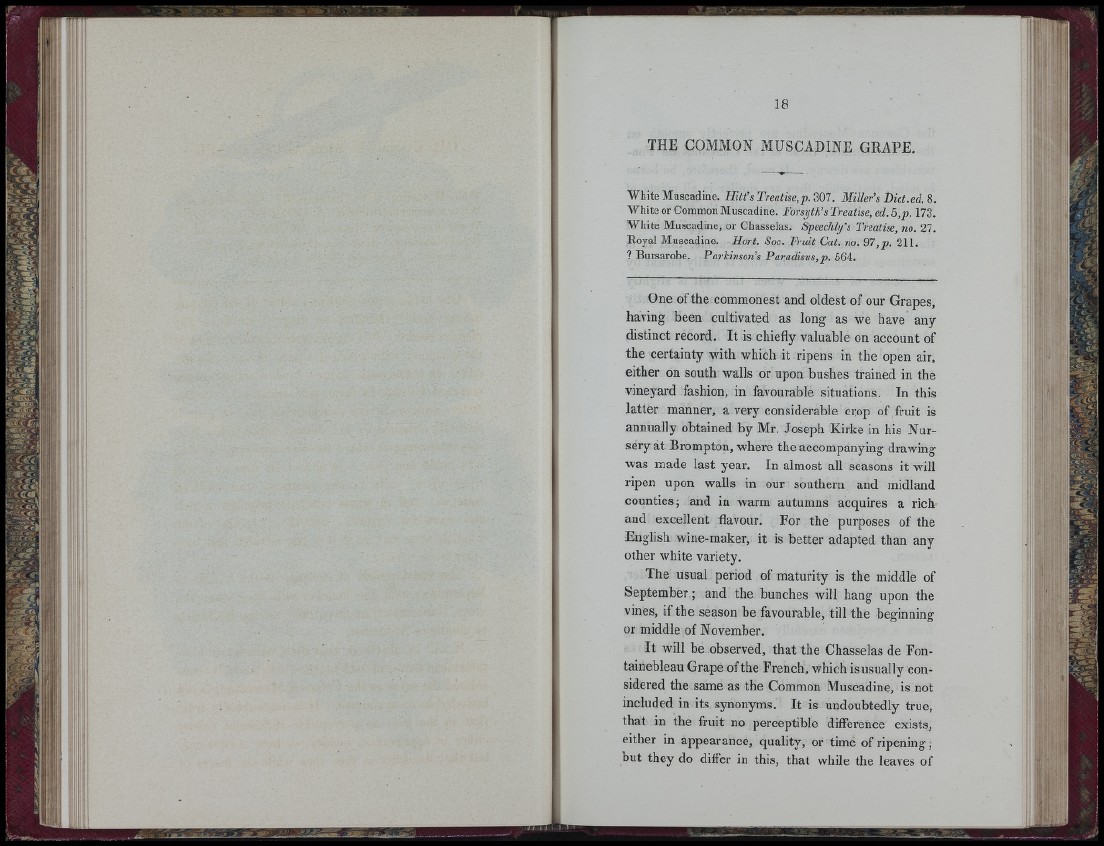
THE COMMON MUSCADINE GRAPE.
White Muscadine. H itt’s Treatise,p. 307. Miller’s Dict.ed. 3.
White or Common Muscadine. Forsyth’s Treatise, ed. 5 ,p . 173.
White Muscadine, or Chasselas. Speechly’s Treatise, no. 27.
Royal Muscadine. Hort. Soc. Fruit Cat. no. 0 7 ,p . 2 l \ .
? Bursarobe. Parkinson’s Paradisus, p . 564.
One of the commonest and oldest of our Grapes,
having been cultivated as long as we have any
distinct record. I t is chiefly valuable on account of
the certainty with which it ripens in the open air,
either on south walls or upon bushes trained in the
vineyard fashion, in favourable situations. In this
la tte r manner, a very considerable ci;op of frait is
annually obtained by Mr. Joseph Kirke in his N u rsery
at Brompton, where the accompanying drawing
was made last year. In almost all seasons it will
ripen upon walls in our southern and midland
counties; and in warm autumns acquires a rich
and excellent flavour. For the purposes of the
English wine-maker, it is better adapted than any
other white variety.
The usual period of maturity is the middle of
September ; and the bunches will hang upon the
vines, if the season be favourable, till the beginning
or middle of November.
I t will be observed, th a t the Chasselas de Fontainebleau
Grape of the French, which is usually considered
the same as the Common Muscadine, is not
included in its synonyms. I t is undoubtedly true,
th a t in the fruit no perceptible difference exists,
either in appearance, quality, or timé of ripening;
but they do differ in this, that while the leaves of
E I:
: ij
ill